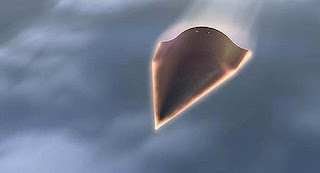AI, or artificial intelligence, refers to the simulation of human intelligence processes by machines, especially computer systems. These processes include learning (the acquisition of information and rules for using the information), reasoning (using rules to reach approximate or definite conclusions), and self-correction.
AI is a broad field that encompasses a variety of approaches, including machine learning (where machines learn from data), neural networks (which mimic the workings of the human brain), natural language processing (enabling machines to understand and generate human language), computer vision (enabling machines to "see" and interpret visual information), and many others.
The potential future of AI is vast and holds significant promise for transforming industries and societies. Some potential developments include:
Improved Automation: AI can automate repetitive tasks, freeing up human workers to focus on more creative and strategic endeavors.
Enhanced Healthcare: AI can analyze complex medical data to assist doctors in diagnosing diseases earlier and more accurately. It can also help in personalized medicine, where treatments are tailored to individual patients based on their genetic makeup and medical history.
Smarter Cities: AI can optimize energy usage, traffic flow, and waste management in urban areas, leading to more efficient and sustainable cities.
Advancements in Science: AI can accelerate scientific research by processing vast amounts of data and identifying patterns that humans might miss. This includes areas such as drug discovery, materials science, and climate modeling.
Personalized Experiences: AI can provide personalized recommendations in fields such as entertainment, shopping, and education, enhancing user experiences.
Autonomous Vehicles: AI is crucial for the development of self-driving cars, which have the potential to improve road safety and reduce traffic congestion.
Ethical Challenges: As AI becomes more advanced, there are significant ethical considerations, such as privacy concerns, bias in algorithms, and the potential for job displacement.
Ultimately, the future of AI will be shaped by how society chooses to develop and deploy these technologies. Striking a balance between innovation and ethical considerations will be crucial in ensuring that AI benefits humanity as a whole.
While artificial intelligence (AI) holds immense promise for improving various aspects of our lives, there are also concerns and potential negative impacts associated with its development and deployment. Here are some of the challenges and "bad things" often discussed in relation to AI:
Job Displacement: One of the most significant concerns is the potential loss of jobs due to automation. AI and robotics can replace human workers in many tasks, leading to unemployment and economic disruption, particularly for those in low-skilled or repetitive jobs.
Bias and Discrimination: AI systems can inherit biases from the data they are trained on, leading to discriminatory outcomes. For example, AI used in hiring processes or loan approvals may inadvertently perpetuate existing biases against certain demographics.
Privacy Concerns: AI systems often require vast amounts of data to operate effectively. This raises concerns about the privacy of individuals, as personal data could be misused or exploited. Unauthorized access to sensitive information by AI systems is also a significant risk.
Security Risks: As AI becomes more integrated into various systems, it also becomes a target for malicious actors. Hackers could exploit vulnerabilities in AI algorithms or use AI itself to carry out cyberattacks with greater sophistication.
Ethical Dilemmas: The use of AI in fields such as healthcare and criminal justice raises complex ethical questions. For instance, decisions made by AI systems, such as who gets medical treatment or how legal judgments are made, may lack transparency and accountability.
Dependency and Control: There's a risk of becoming overly reliant on AI systems, which could lead to a loss of control over critical systems and decision-making processes. This dependency could be exploited by those who control the AI systems.
Social Isolation: As AI-driven technologies become more prevalent, there's a concern that human interaction could be diminished. This can have social and psychological impacts, particularly on younger generations who grow up with AI-driven devices as primary sources of interaction.
Economic Inequality: The benefits of AI may not be evenly distributed, leading to increased economic inequality. Those with access to AI technology and the skills to work with it may thrive, while others could be left behind.
Lack of Transparency and Accountability: Understanding how AI systems arrive at their decisions can be challenging, especially with complex algorithms like deep learning. This lack of transparency can make it difficult to hold AI accountable for errors or biases.
Existential Risks: Some experts worry about the long-term implications of superintelligent AI systems that surpass human intelligence. These concerns range from the loss of human control over AI to scenarios where AI systems develop goals that are harmful to humanity.
Addressing these challenges requires careful consideration, ethical guidelines, regulatory frameworks, and ongoing research to ensure that AI technologies are developed and deployed in a responsible and beneficial manner.











